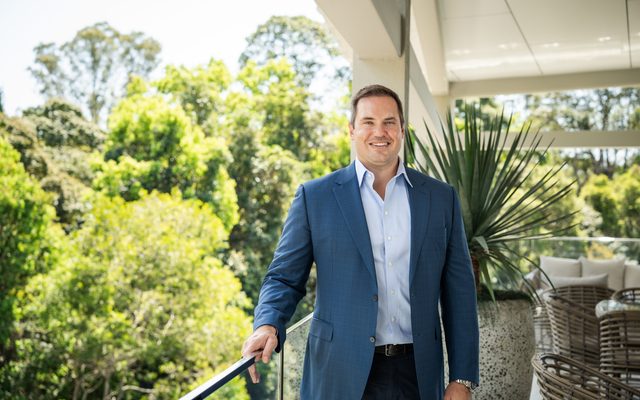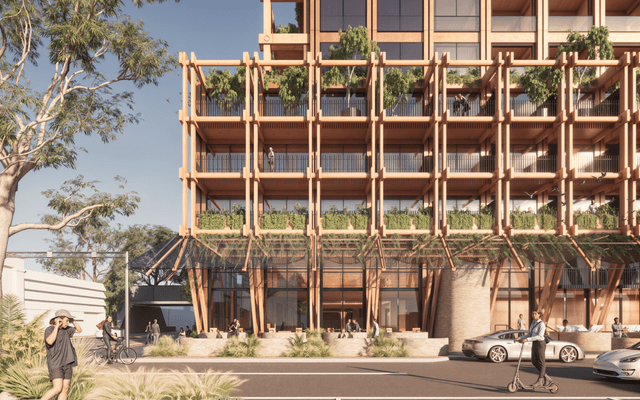This article is from the Australian Property Journal archive
THE Morrison government has pinned its re-election hopes on the Budget 2022 with funding for housing, infrastructure, childcare, aged care and manufacturing supply chains but Treasurer Josh Frydenberg ignored the government’s own recommendations to stimulate the build-to-rent sector and missed the opportunity to reform the taxation system.
It was no surprise that the budget’s signature piece was investment in housing as it becomes increasingly clear that homeownership will be a major deciding factor in upcoming election.
Research revealed Australians will need to save for at least eight years for a deposit and more than 40% of voters in most Sydney, Brisbane and Melbourne electorates are experiencing rent and mortgage stress. Recently Labor revealed it will aim to help 10,000 regional families into their first home each year.
First home buyers and affordable housing
The government will increase the National Housing Finance and Investment Corporation (NHFIC) liability cap by an additional $2.0 billion to $5.5 billion. This increase is expected to support around 10,000 more affordable dwellings.
Since its establishment in 2018, NHFIC has supported more than 15,000 new and existing affordable dwellings through the provision of low-cost loans to Community Housing Providers.
The government is also committing $8.6 million to expand the Home Guarantee Scheme to 50,000 places per year. The scheme has supported almost 60,000 buyers and up to 35,000 places per year will be available for first home buyers under the First Home Guarantee (previously the First Home Loan Deposit Scheme).
Furthermore, a new Regional Home Guarantee with up to 10,000 places per year will help aspiring homebuyers in regional areas. The Family Home Guarantee will be increased to 5,000 places per year to provide a supported pathway into homeownership for more single parents with dependants.
“Home ownership is fundamental to the Coalition,” the treasurer said.
“HomeBuilder, the First Home Super Saver Scheme and the Home Guarantee Scheme have helped make the dream of home ownership a reality. Over the last year, 160,000 Australians purchased their first home.
“Tonight we go further… helping more single parents to buy a home with a deposit as low as 2%. Helping more first home buyers to buy a home with a deposit as low as 5%.
“In this Budget we are also increasing our support for affordable housing by $2 billion through the National Housing Finance and Investment Corporation.
“Helping more Australians to own a home is part of our plan for a stronger future.” Frydenberg said.
But responses to the housing measures announced in the budget were mixed.
Missed opportunity and no changes to taxation system
Despite the recommendations made by government dominated inquiry, Treasurer Frydenberg did not announce changes to the taxation system to spur the nascent build to rent sector.
The Inquiry also recommended stamp duty should be replaced over time with an annual broad-based land tax, avoiding those who have already or recently paid stamp duty facing double taxation through the replacement tax. This would increase housing turnover, remove an unnecessary obstacle to home ownership and stabilise government revenues.
“The evidence the committee has heard suggests that build-to-rent housing would provide consumers more choice and has the potential to increase security of tenure,” Liberal MP Jason Falinski said during the release of the report.
Urban Taskforce chief executive Tom Forrest said the recommendations published by the Federal Parliamentary Inquiry into Housing Affordability and Supply on how to address both affordability and supply of new homes have been ignored.
“The Parliamentary Committee recommended targeted investment in infrastructure, such as public transport, in communities that welcome urban growth and increased density. The budget has plenty of funding for infrastructure, and while welcome, it is not targeted on assisting the delivery of new housing supply.
“The field is now open for Labor to make a pitch for the generation of millennials who have been frozen out of the housing market. The challenge is there for Anthony Albanese to support a boost to all forms of housing supply.
“While the Federal Parliamentary Inquiry into Housing Affordability and Supply laid the groundwork for tonight’s Federal Budget, The Treasurer has left it on the shelf – hopefully to be dusted off and addressed another day.
“But with the election around the corner, an entire generation of millennials will be struggling to see how this budget offers them hope in their quest to buy a home.” Forrest said.
Additional $1.7 billion for child care
The treasurer announced record funding in child care services, committing an additional $1.7 billion for about 250,000 families by removing the annual cap on the Child Care Subsidy and increasing the rate for families with two or more children in care.
But Thrive by Five said the budget failed to deliver vital relief for families on the cost of early learning and childcare.
Thrive by Five Director Jay Weatherill said out of pocket early learning costs have gone up by nearly 10% over the past two years and yet this Budget fails to make childcare more affordable.
“The Budget is a missed opportunity to invest properly in high-quality early childhood education as a key driver for easing cost of living pressures and supporting women and children. The cost of childcare places pressure on household budgets, makes work unaffordable for too many parents – especially women – and leaves too many children without access to learning in the crucial early years.
“Early learning is a smart investment with every dollar spent delivering about $2 back in economic and social benefits.” Weatherill said.
Continuing to fix aged care
Following the damning findings by the Royal Commission into Aged Care Quality and Safety last year, the government will commit a further $468.3 million which builds on the $17.7 billion announced in 2021-22 Budget.
Infrastructure investment
The government had earlier this week unveiled a 10-year $120 billion infrastructure pipeline, including $3.1 billion for Melbourne Intermodal Terminals.
Improving supply chains
The COVID-19 pandemic exposed the vulnerability in global supply chain and Australia’s reliance on offshore manufacturing.
Last night Treasurer Frydenberg announced more than $1 billion of new investment that builds on the government’s $1.5 billion Modern Manufacturing Strategy. In addition, $500.0 million will support manufacturers in regions through a new Regional Accelerator Stream of the Modern Manufacturing Initiative and a new dedicated $200.0 million Regional Accelerator Stream of the Supply Chain Resilience Initiative that will assist regional businesses to address supply chain vulnerabilities and additional funding for the CSIRO.
“COVID and events in Ukraine have been a powerful reminder that we must increase our self‑reliance.” the treasurer said.
China’s zero-tolerance Covid pursuit through tough lockdowns will cause a bigger shockwave to global supply chains than Russia’s invasion of Ukraine, according to one of the top 10 logistics global tech companies.
This week authorities locked down half of Shanghai as COVID cases increased. Container XChange said lockdowns will further reduce capacity and cause a surge in already inflated shipping prices.
“Tonight, we announce new funding to solve for vulnerabilities in our supply chains. New funding to drive collaboration between our universities, CSIRO and industry to rapidly commercialise new technologies in clean energy, medical supplies, defence and other high priority areas.
“A modern resilient manufacturing sector is part of our plan for a stronger future,” Frydenberg said.
Overseas migration expected to return to normal levels
The government said 180,000 arrivals are forecast for 2022-2023 and 213,000 arrivals are expected in 2023-24.
The Urban Development Institute of Australia applauded the budget and national president Max Shifman said this is critical for Australia, as this comes closer to closing the migration gap that has setback the economy and industry over the last two years during the pandemic.
“This is a key recommendation from UDIA National in our pre-budget submission and a critical step to close the gap in immigration numbers and make back ground lost in 2019-21. This is fundamental – Immigration is crucial for the economy and needs to return to normal levels soon, to safeguard the economic and social advantages it provides,” said Shifman.





